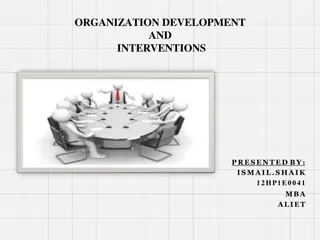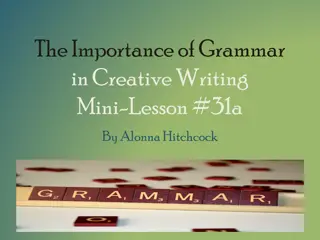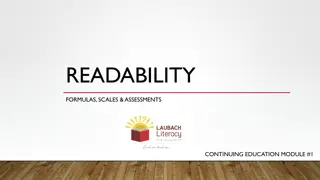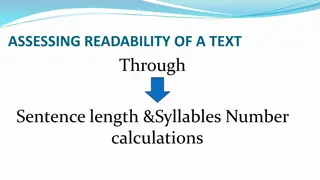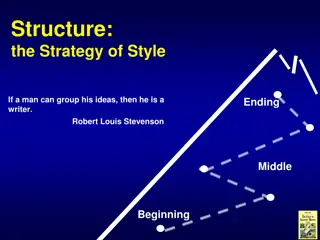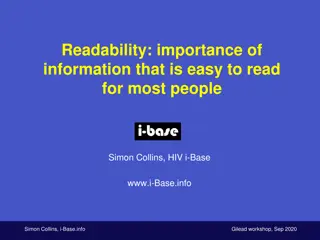Enhancing Readability and Organization Through Effective Headings
Learn the importance of headings in technical writing, how they enhance readability and professionalism, and their role in guiding readers through the document. Discover best practices for designing headings, including font type, size, and placement. See examples of different heading levels and their formatting. Master the art of creating clear and informative headings to improve the overall structure of your documents.
Download Presentation

Please find below an Image/Link to download the presentation.
The content on the website is provided AS IS for your information and personal use only. It may not be sold, licensed, or shared on other websites without obtaining consent from the author. Download presentation by click this link. If you encounter any issues during the download, it is possible that the publisher has removed the file from their server.
E N D
Presentation Transcript
Headings Technical Writing Essentials, Chapter 3.2 Page1
Headings increase the readability, scannability, and overall professionalism of the document What do headings do? Headings should concretely indicate the topic and purpose of the paragraphs that follow; avoid vague headings such as Introduction Page2
What do headings accomplish? Provide an overview Indicate the logic Enable readers to read selectively Provide breaks and passive space Keep readers focused Keep the writer focused and organized Page3
To indicate hierarchical of importance of different levels of headings, use Font type and size Bold font style Placement (indentation) Numbering system How do you design headings? Be consistent in using one size/style/font for each heading on the same level Use font size logically for each section level: larger size = more emphasis Use a numbering system to indicate hierarchical importance of headings and flow in longer documents Page4
Heading: Arial bold 16 point font. Introduce with Arabic numeral; aligned with left margin. 1.5 space below (whitespace between heading and text below it) Heading Designs First Level Example 1. Heading Level One This is text. This is text. This is text. This is text. This is text. This is text. This is text. This is text. This is text. This is text. This is text. This is text. This is text. This is text. This is text. This is text. Body font: 12 point Times New Roman Page5
Leave white space under the end of the previous section. There should always be slightly more white space above the heading than below. Heading Designs 1.1. Heading Level Two This is text. This is text. This is text. This is text. This is text. This is text. This is text. This is text. This is text. This is text. This is text. This is text. This is text. This is text. This is text. This is text. Second Level Example 0.5 indent from margin. Line spacing 1.5 . Arial bold 14 point font. Introduce with numeral and one decimal place Page6
Additional indent from margin (optional). Line spacing 1.5 . Font Times New Roman bold italics 14 points. Introduce with an Arabic numeral Heading Designs 1.1.1. Heading Three This is text. This is text. This is text. This is text. This is text. This is text. This is text. This is text. This is text. This is text. This is text. This is text. This is text. This is text. This is text. This is text. Page7
1. Straw Bale Construction Under this first level heading you will find text all about straw bale construction. It will go on for several lines. If there is a 1. Section, there will also be a 2. Section. Avoid lone headings. Example 1.1. Post and Beam with Straw Bale Infill. This section may align directly under the 2nd level heading, or can align with the left margin. This will not be a lone heading; this section will have a similar B. and maybe even a C. section. 1.1.1. Relevance This third level heading is further indented, and smaller or in italics to set it off from second level heading. Again, if you have a number 1., you should have a number 2., etc. 1.1.2. Additional Third Level Heading Text added below 1.2. Additional Second Level Heading Text, text text 2. Cinder Block Construction
Each section must have a heading Use consistent formatting (Use STYLES) for each level of heading How do you use headings? Make the heading accurate and descriptive Use parallel phrasing at each level Use task-oriented headings in instructions Have more passive space above the heading than below Use no more than2 to 4 headings per page Page9
Lone headings Don t have just one heading in a section; that would be like one list item Stacked headings Have text after every heading Imagine each heading is like a chapter title; it needs a chapter of text after it. What to Avoid Headings as lead-ins to lists Headings as titles of figures or tables Widows and orphans don t orphan a heading at the bottom of a page all by itself Referring to a heading with a pronoun Start your paragraph as if the heading were not there Don t start a section with the word this or these Page10
Name three things that headings accomplish What are stacked headings and when should these be used? True or false? Background or Technical Information are examples of effective descriptive headings Quick Quiz What is a lone heading? Can a heading introduce a table? True or false: 3rd level neadings should be larger than first level headings? True or false? There should be more white space above the heading than below? Page11

 undefined
undefined







